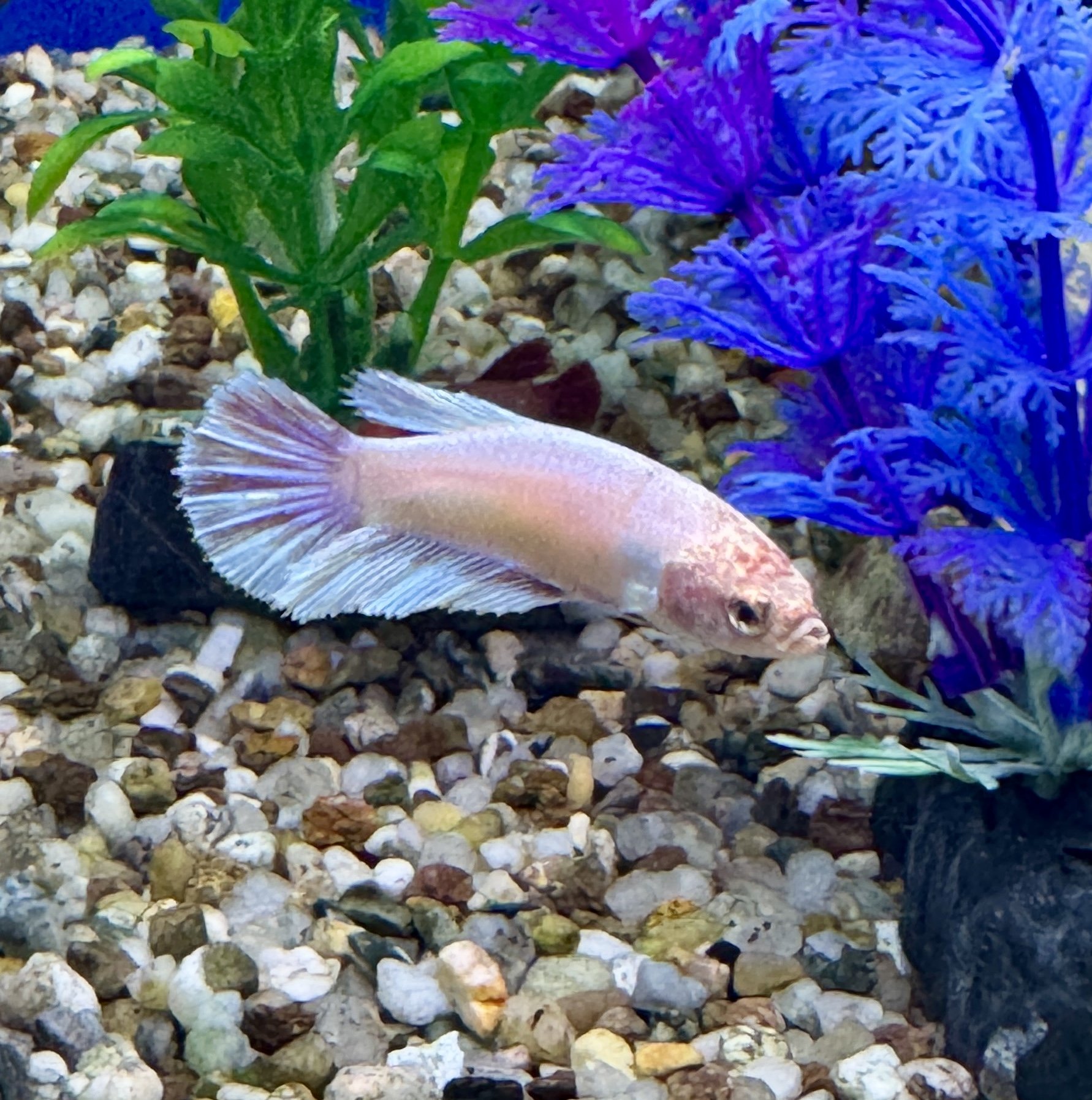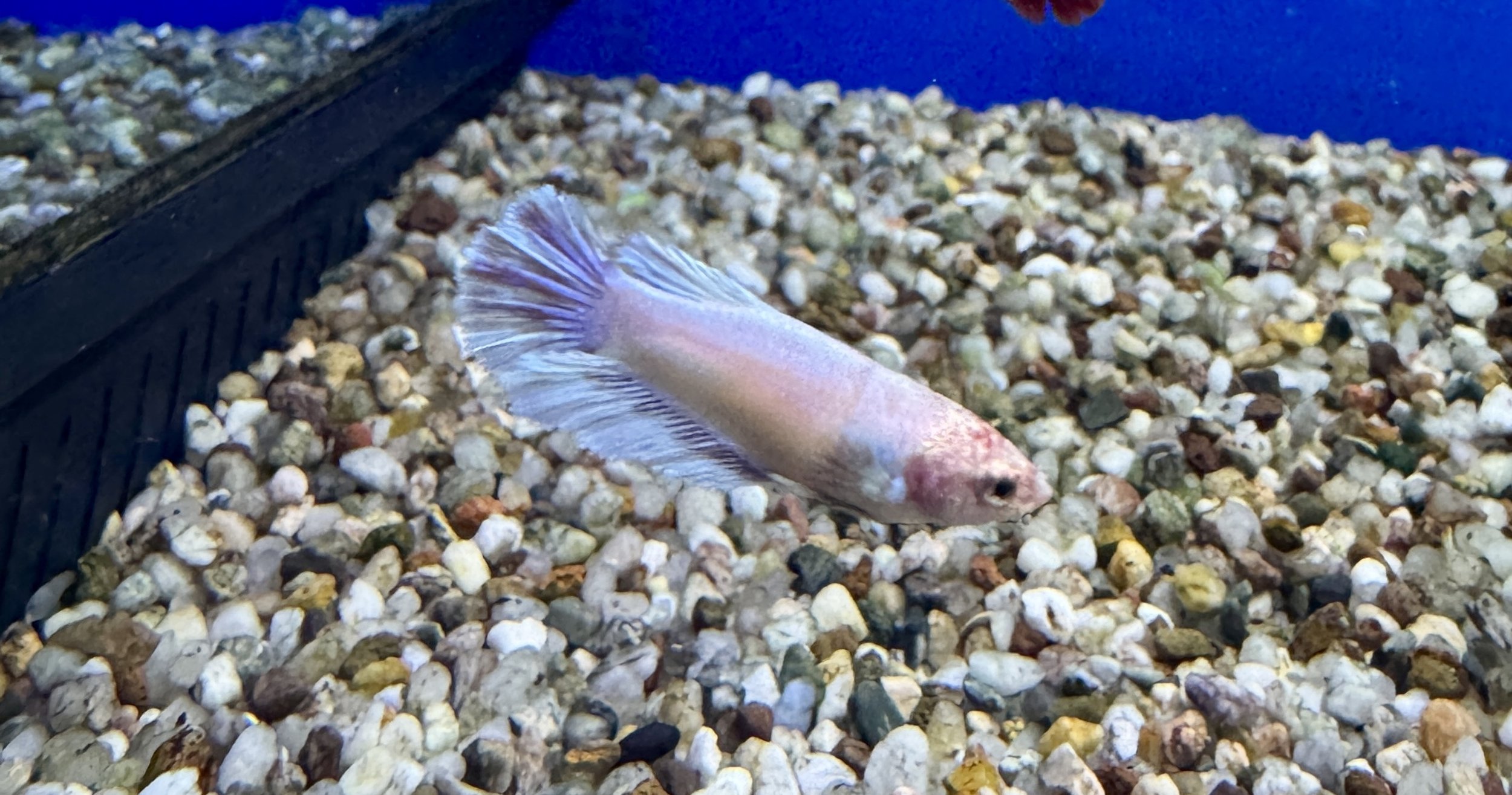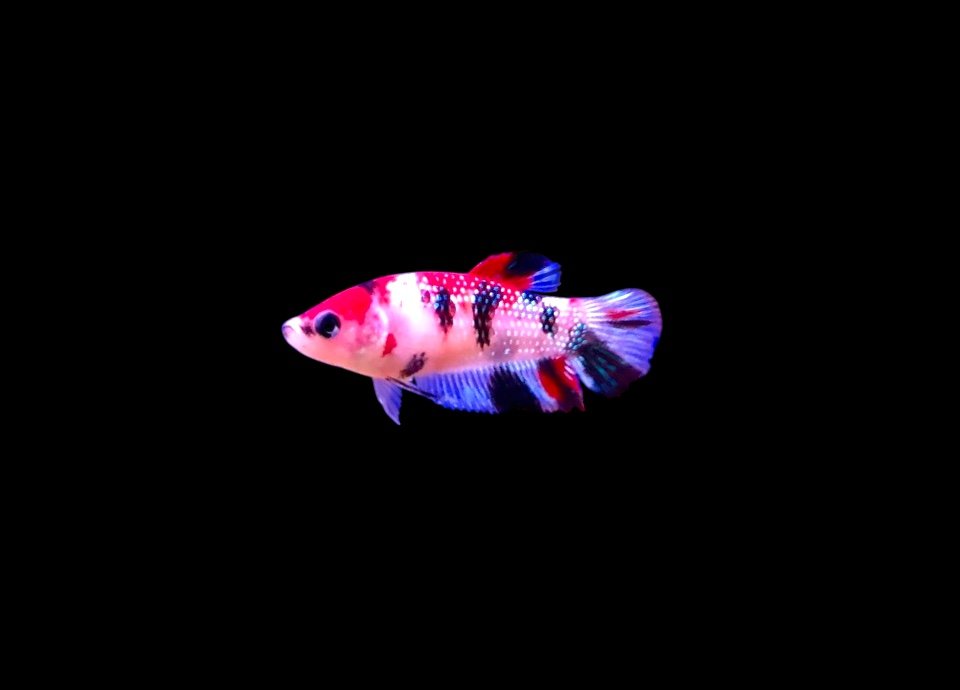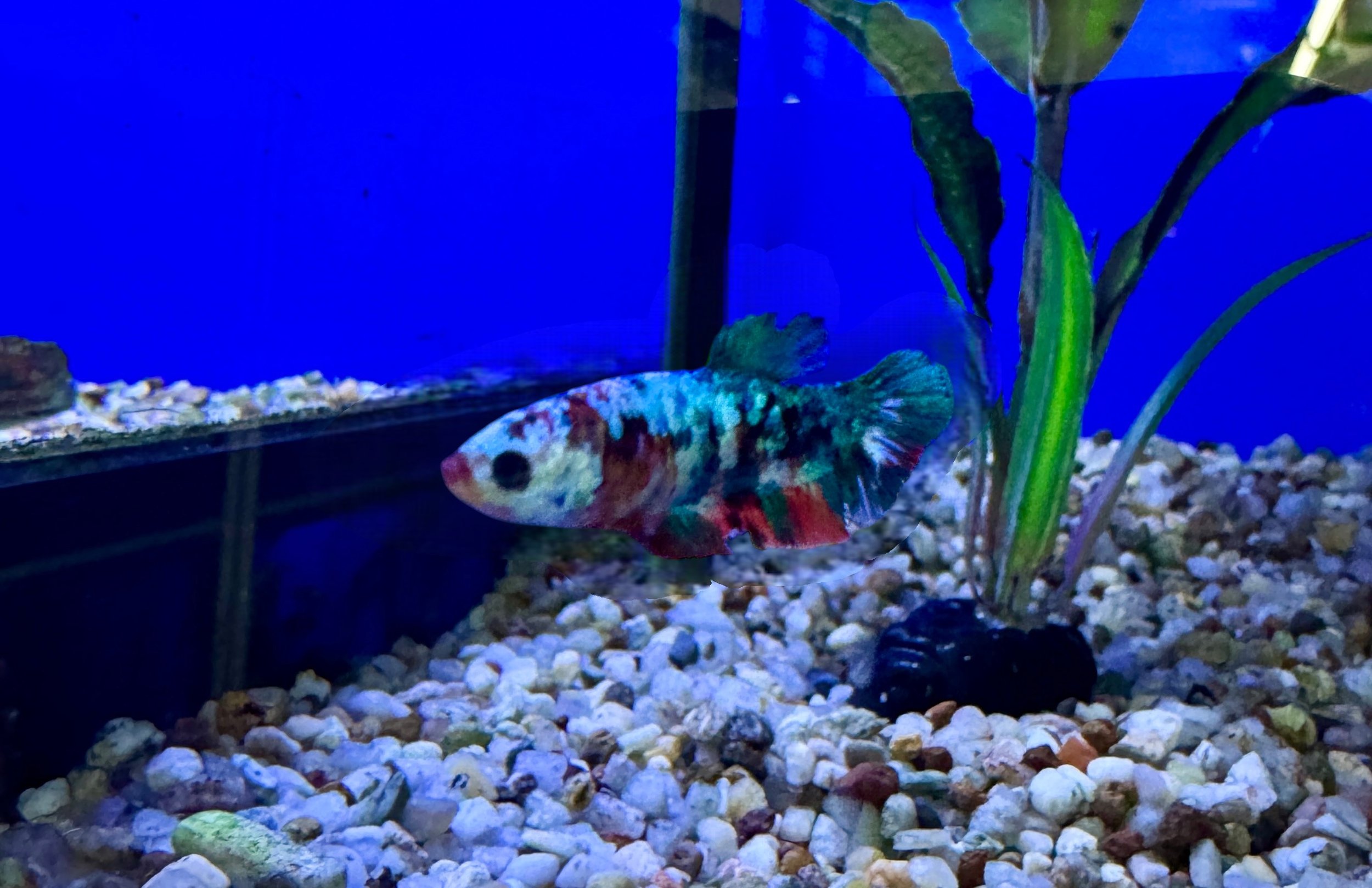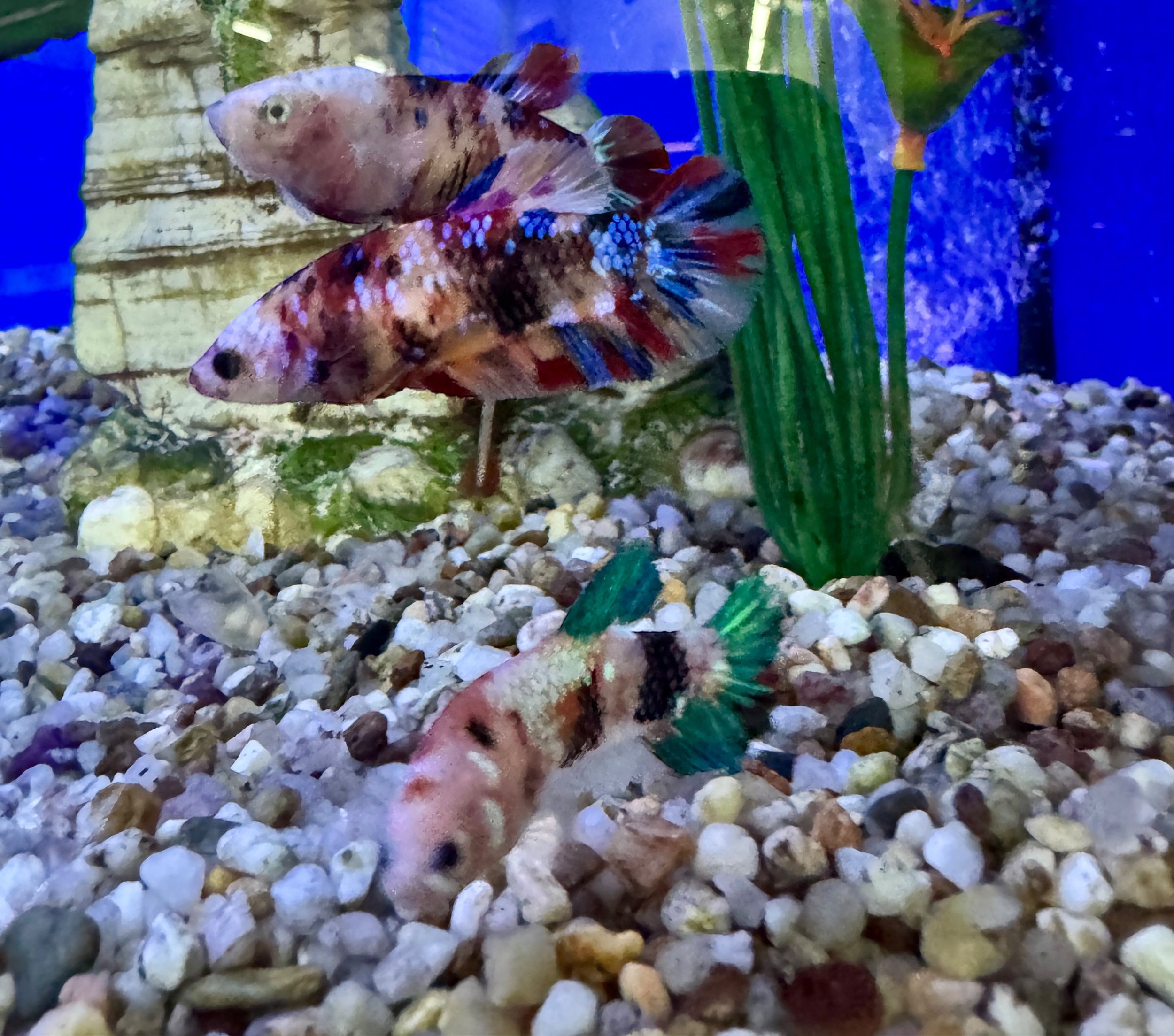 Image 1 of 1
Image 1 of 1


Samurai Male Betta - Betta splendens 2-3cm
The Samurai Male Betta is a striking and highly prized variety of the Betta splendens species, known for its robust and powerful appearance. These bettas are often characterized by their strong, muscular build and Black, silver colors,. The term "Samurai" is used to describe their aggressive and dominant nature, which is a key feature of this variety.
Samurai Male Bettas are highly territorial and should be kept alone or with a carefully selected group of peaceful, non-aggressive fish. They are not suitable for community tanks with other male bettas or fish that have long, flowing fins, as they may see these as threats and attack them. Ideal tank mates include small, fast-moving fish like tetras, rasboras, or danios, as well as bottom-dwelling species like Corydoras catfish or snails.
These bettas are relatively easy to care for and can adapt to a wide range of water conditions, provided the parameters are stable. They thrive in a well-maintained tank with a gentle filter and plenty of hiding spots, such as live plants, driftwood, and caves. These hiding spots provide security and help reduce stress, which is crucial for their well-being. A soft, sandy substrate is ideal, as it mimics their natural habitat and is gentle on their delicate fins.
Feeding a Samurai Male Betta is straightforward. They are carnivorous and will readily accept a variety of commercial betta pellets, as well as live or frozen foods like brine shrimp, bloodworms, and daphnia. A balanced diet is essential for maintaining their health and vibrant colors. Overfeeding should be avoided to prevent health issues such as obesity and poor water quality.
Breeding Samurai Male Bettas can be a rewarding but challenging experience. The males build bubble nests and court the females, who then lay their eggs. The male will fertilize the eggs and guard the nest until the fry hatch. A separate breeding tank with optimal conditions and minimal predators is recommended to ensure a higher survival rate for the fry. The tank should have a gentle current and be well-planted to provide hiding spots for the female, as the male can become aggressive during the breeding process.
Overall, the Samurai Male Betta is a beautiful and captivating addition to any freshwater aquarium, bringing both a powerful presence and vibrant colors to your aquatic environment. Their unique appearance and strong personality make them a favorite among betta enthusiasts, but they require careful management to ensure a harmonious tank.
The Samurai Male Betta is a striking and highly prized variety of the Betta splendens species, known for its robust and powerful appearance. These bettas are often characterized by their strong, muscular build and Black, silver colors,. The term "Samurai" is used to describe their aggressive and dominant nature, which is a key feature of this variety.
Samurai Male Bettas are highly territorial and should be kept alone or with a carefully selected group of peaceful, non-aggressive fish. They are not suitable for community tanks with other male bettas or fish that have long, flowing fins, as they may see these as threats and attack them. Ideal tank mates include small, fast-moving fish like tetras, rasboras, or danios, as well as bottom-dwelling species like Corydoras catfish or snails.
These bettas are relatively easy to care for and can adapt to a wide range of water conditions, provided the parameters are stable. They thrive in a well-maintained tank with a gentle filter and plenty of hiding spots, such as live plants, driftwood, and caves. These hiding spots provide security and help reduce stress, which is crucial for their well-being. A soft, sandy substrate is ideal, as it mimics their natural habitat and is gentle on their delicate fins.
Feeding a Samurai Male Betta is straightforward. They are carnivorous and will readily accept a variety of commercial betta pellets, as well as live or frozen foods like brine shrimp, bloodworms, and daphnia. A balanced diet is essential for maintaining their health and vibrant colors. Overfeeding should be avoided to prevent health issues such as obesity and poor water quality.
Breeding Samurai Male Bettas can be a rewarding but challenging experience. The males build bubble nests and court the females, who then lay their eggs. The male will fertilize the eggs and guard the nest until the fry hatch. A separate breeding tank with optimal conditions and minimal predators is recommended to ensure a higher survival rate for the fry. The tank should have a gentle current and be well-planted to provide hiding spots for the female, as the male can become aggressive during the breeding process.
Overall, the Samurai Male Betta is a beautiful and captivating addition to any freshwater aquarium, bringing both a powerful presence and vibrant colors to your aquatic environment. Their unique appearance and strong personality make them a favorite among betta enthusiasts, but they require careful management to ensure a harmonious tank.
Samurai Male Betta (Betta splendens)
Scientific Name: Betta splendens
Common Name: Samurai Male Betta
Family: Osphronemidae
Origin: Southeast Asia, specifically Thailand, Cambodia, Vietnam, and Malaysia
Size: Up to 3 inches (7.6 cm)
Lifespan: 2-5 years
Diet: Carnivorous; primarily feeds on small insects and crustaceans in the wild, but in captivity, they can be fed a variety of commercial betta pellets, live or frozen foods like brine shrimp, bloodworms, and daphnia
Temperament: Generally aggressive, especially towards other male bettas and fish with similar fin shapes or colors
Water Parameters:
Temperature: 75-82°F (24-28°C)
pH: 6.5-7.5
Hardness: 5-20 dGH
Tank Size: Minimum 30 litres but larger tanks are better for maintaining stable water conditions and providing ample space
Compatibility: Best kept alone or with peaceful, non-aggressive fish that do not have long, flowing fins

